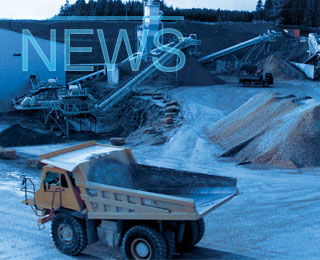Siam City Cement PCL (SCCC), Thailand’s second largest cement maker, said on Wednesday it expects sales to grow more than 10 per cent this year due to strong domestic demand. Domestic cement consumption would rise an annual 8-10 per cent to 30-32Mt this year and reach 35mt next year, managing director Leo Mittelholzer told Reuters. "We would try to get at least this figure, hopefully to add a little bit," Mittelholzer said of his company’s sales growth this year.
"We would like to grow our ready mixed business a bit more aggressively. Our sales target is more than 10 per cent." Next year, sales would grow at the industry rate "more or less," Mittelholzer said.
SCCC planned to raise sale prices in line with rising energy prices to maintain margins for cement products, Mittelholzer said. Coal and lignite were major fuels while oil and electricity accounted for about 70 percent of production cost, he said. The company had used alternative fuels from waste like tyres, rubber and plastic over the past 3 years in a bid to cushion the volatility of energy prices, he said. "This is something which we do worldwide in the group quite successfully."
SCCC is 32 percent owned by Swiss firm Holcim , the world’s second-largest cement maker, which acquired most of its stake during SCCC’s debt restructuring in 1998. Unlike bigger rival Siam Cement , which has diversified into petrochemicals and paper industries, Siam City Cement, which has sold off non-core assets over the past three years, is now solely focused on producing cement.
SCCC has an installed capacity of 14.5Mt and is running at very close to that figure. It had no plans to increase cement capacity this year or next, Mittelholzer said. "I can cut exports. Take the exports back. Because the domestic market base is a high margin market. So I substitute low margin with high margin, which is more interesting," he said. The company exports about 4.5Mt a year, he said. SCCC also had a domestic market share of about 28 per cent and expected to maintain that, he added.
"We would like to be a quality company having a safe balance sheet. Maybe that’s not so sexy, but it’s safe. We want to pay a good dividend," he said. The company’s dividend payout ratio was close to 80 percent last year and the company expected it to remain there, he said. "We can’t go much higher. But we will see as we have a flexible dividend payment and we will see what happen. If we have interesting investment project maybe that may change, but if we don’t then we pay the money back to shareholders," he said.
